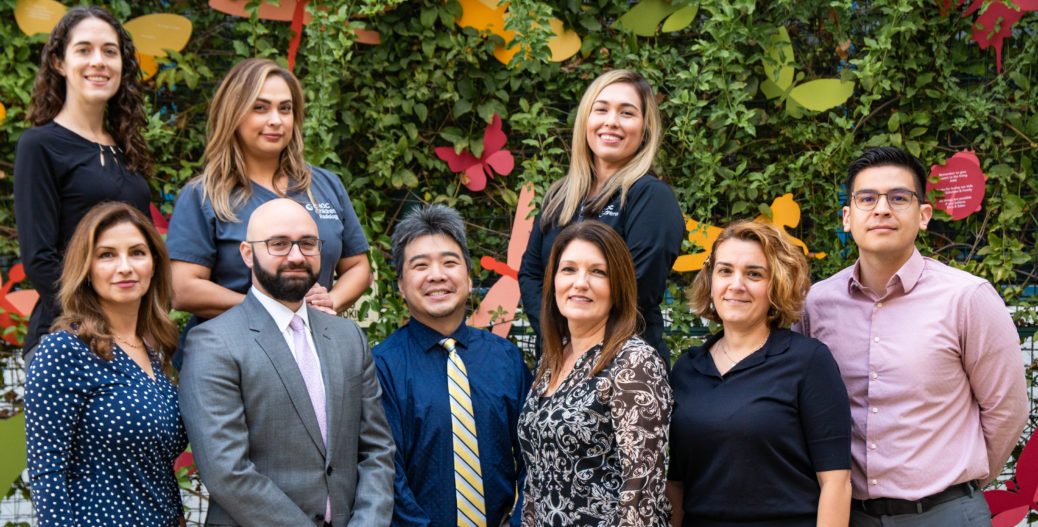Physicians at CHOC Hospital recently administered the first ever in-human dosing of gene therapy for Hurler Syndrome, the severe form of mucopolysaccharidosis type I (MPS I), a rare and progressive lysosomal storage disease.
If ultimately successful, the gene therapy could present an alternative treatment for Hurler Syndrome, which currently calls for a stem cell transplant for children younger than 2 ½. While stem cell transplants are well-proven to help prevent most of the neurologic decline that happens to untreated MPS I patients, the procedure poses significant risks.
Patients with MPS I have a genetic mutation that leads to a deficiency in alpha-L-iduronidase. This enzyme helps break down chemicals called glycosaminoglycans, specifically dermatan and heparin sulfate, the buildup of which can ultimately cause enlarged organs and tissues, heart valve thickening, spinal cord compression, hydrocephalus and progressive loss of intellectual milestones.
The hope is that the gene therapy – RGX-111, which is produced by REGENXBIO Inc. – will equip the patient’s brain cells with the information needed to make working alpha-Liduronidase enzyme to stop the glycosaminoglycans from building in the brain, says Dr. Raymond Wang, a CHOC pediatric metabolic disorders specialist and the study’s lead investigator.
The procedure required five months of planning across disciplines at CHOC, including pediatric metabolic disorders, radiology and imaging, nursing and pharmacy, the pediatric intensive care unit and the CHOC Research Institute, as well as additional radiology expertise from another institution and support from REGENXBIO.
The therapy was administered through a cervical puncture in the neck. With three-dimensional visualization and guidance from a computed tomography scanner, CHOC interventional radiologist Dr. Tammam Beydoun carefully inserted the needle into the fluid-filled space at the junction of the spinal cord and brain stem. Then, Dr. Wang administered the gene therapy.

“I could not have asked for a better implementation of everything we had planned for many months,” Dr. Wang says. “I am so grateful for such an awesome team of people working together for one common goal.”
Dr. Wang says the patient will be monitored indefinitely, with clinicians tracking the child’s cognitive and physical development, as well as measuring the quantity of alpha-L-iduronidase in the child’s body and spinal fluid to determine whether glycosaminoglycans dermatan and heparin sulfate are being broken down.
“I cannot guarantee if the gene therapy is going to work, but the alternative was to watch and let this patient get worse and worse and worse,” said Dr. Raymond Wang. “We’ve got to try something.”
Babies with MPS I show no signs of the condition upon birth. To this end, MPS I was added to the list of conditions tested for in California’s Newborn Screening Program in 2018. But even with enzyme replacement therapy treatment, recommended to begin before age 2, the disease continues to progress, Dr. Wang says.
“Patients will reach a plateau in developmental milestones, and then they’ll start losing milestones,” he says. “Once they could speak, they lose the ability to speak. Once they were able to walk, they lose ability to walk. Then it gets to be really heartbreaking: Once they could eat, then they can’t eat anymore.”
Many patients ultimately rely on feeding tubes, while often enduring airway problems, cardiac disease and hydrocephalus. Quality of life is typically poor, Dr. Wang says.
Not only could a successful outcome in this investigation dramatically change the course of a patient’s life, but it could also pave the way for future gene therapy for additional patients with rare diseases at CHOC, Dr. Wang says.
“This is an opening chapter for a very cool story,” Dr. Wang says.
Learn more about research at CHOC.




